 Search by Keyword
Sign Up Below for our MONTHLY BEATLES TRIVIA QUIZ!
|
“WE CAN WORK IT OUT”
(John Lennon – Paul McCartney)
 While The Beatles were recording their later 1965 masterpiece “Rubber Soul,” their usual concern was which recording would be left off of the album in order to be released as their next single. After three days of these recording sessions had transpired, the new Lennon/McCartney rocker “Day Tripper” was earmarked as their next million-selling hit song. The issue appeared to be settled and they went on with recording the rest of the album. While The Beatles were recording their later 1965 masterpiece “Rubber Soul,” their usual concern was which recording would be left off of the album in order to be released as their next single. After three days of these recording sessions had transpired, the new Lennon/McCartney rocker “Day Tripper” was earmarked as their next million-selling hit song. The issue appeared to be settled and they went on with recording the rest of the album.
However, two sessions later, another composition from the pen of John and Paul seemed to fit the bill as well. “We Can Work It Out” was that song, which the group spent nearly eleven hours (across two recording sessions) to perfect. Since it seemed to be a more “commercial” track, it looked as if it might replace “Day Tripper” as the next single release by the group.
 Then the pendulum swung back again. “After a lot of talk, we decided ‘Day Tripper’ is really the top track. This is what I had wanted all along,” George Harrison explained at the time. John also began to object and insist that “Day Tripper” be the song to represent their current sound, undoubtedly because of its heavier feel and the encrypted lyrics. Having reached a stalemate, a compromise appeared to be in order – one that set a new precedent in the British record business. Both songs would be released on the same single, but not with the usual a-side and b-side designations. Then the pendulum swung back again. “After a lot of talk, we decided ‘Day Tripper’ is really the top track. This is what I had wanted all along,” George Harrison explained at the time. John also began to object and insist that “Day Tripper” be the song to represent their current sound, undoubtedly because of its heavier feel and the encrypted lyrics. Having reached a stalemate, a compromise appeared to be in order – one that set a new precedent in the British record business. Both songs would be released on the same single, but not with the usual a-side and b-side designations.
 George Martin explained at the time: “After we gave both titles to EMI, the boys decided that they preferred ‘Day Tripper,’ but both sides are extremely good and worth a lot of plays. As far as EMI’s official policy is concerned, there is no a-side, and both will be promoted equally.” George Martin explained at the time: “After we gave both titles to EMI, the boys decided that they preferred ‘Day Tripper,’ but both sides are extremely good and worth a lot of plays. As far as EMI’s official policy is concerned, there is no a-side, and both will be promoted equally.”
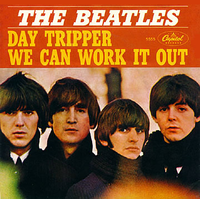 So as far as Britain was concerned, both sides of the new Beatles single were equally hits and the record predictably peaked in the #1 spot. However, since in the US their policy was to chart each side of a single individually if they both gained popularity, the race was on to see which side of the new Beatles single would beat out the other. As it turned out, “Day Tripper” peaked at #5 on the Billboard Hot 100 while the somewhat more “commercial” composition, “We Can Work It Out,” made it all the way to #1 and stayed there for three weeks. So as far as Britain was concerned, both sides of the new Beatles single were equally hits and the record predictably peaked in the #1 spot. However, since in the US their policy was to chart each side of a single individually if they both gained popularity, the race was on to see which side of the new Beatles single would beat out the other. As it turned out, “Day Tripper” peaked at #5 on the Billboard Hot 100 while the somewhat more “commercial” composition, “We Can Work It Out,” made it all the way to #1 and stayed there for three weeks.
Songwriting History
 Not surprisingly, the initial writing of the song was by Paul, one of a trio of compositions inspired by his then turbulent relationship with girlfriend Jane Asher (“I’m Looking Through You” and “You Won’t See Me” being the other two). "The lyrics might have been personal,” Paul recollects. “It is often a good way to talk to someone or to work your own thoughts out. It saves you going to a psychiatrist, you allow yourself to say what you might not say in person." Not surprisingly, the initial writing of the song was by Paul, one of a trio of compositions inspired by his then turbulent relationship with girlfriend Jane Asher (“I’m Looking Through You” and “You Won’t See Me” being the other two). "The lyrics might have been personal,” Paul recollects. “It is often a good way to talk to someone or to work your own thoughts out. It saves you going to a psychiatrist, you allow yourself to say what you might not say in person."
 In his 2021 book "The Lyrics," Paul adds, "Time has told me that millions of people go through these little squabbles all the time and will recognize just how common this is, but this particular song wasn't like that; it was, 'Try to see it my way.' When you are a songwriter, it's a good thing to just go off and get your point of view in a song, and with a Beatles song, if it's going to be heard by millions of people, you can spread a good message...If you wanted to say it in one line, it would be, 'Let's not argue.' If you wanted to say it in two lines: 'Let's not argue / Listen to me.' Obviously, that is quite selfish, but then so is the song. I started writing the song to try to figure my way out of feeling bad after an argument." In his 2021 book "The Lyrics," Paul adds, "Time has told me that millions of people go through these little squabbles all the time and will recognize just how common this is, but this particular song wasn't like that; it was, 'Try to see it my way.' When you are a songwriter, it's a good thing to just go off and get your point of view in a song, and with a Beatles song, if it's going to be heard by millions of people, you can spread a good message...If you wanted to say it in one line, it would be, 'Let's not argue.' If you wanted to say it in two lines: 'Let's not argue / Listen to me.' Obviously, that is quite selfish, but then so is the song. I started writing the song to try to figure my way out of feeling bad after an argument."
 The problem stemmed from Jane Asher's deep determination to continue pursuing an acting career, something she had been doing well before ever meeting Paul. She decided to join up with the Bristol Old Vic Company in October of 1965, which meant that she moved from her home town of London (where she lived with Paul in her family home) to the west of England. Not being content just to be a girlfriend of a Beatle, an opportunity that most female fans would have given their right arm for, this caused a good degree of insecurity for Paul who, with his group, had just begun work on the “Rubber Soul” album. The problem stemmed from Jane Asher's deep determination to continue pursuing an acting career, something she had been doing well before ever meeting Paul. She decided to join up with the Bristol Old Vic Company in October of 1965, which meant that she moved from her home town of London (where she lived with Paul in her family home) to the west of England. Not being content just to be a girlfriend of a Beatle, an opportunity that most female fans would have given their right arm for, this caused a good degree of insecurity for Paul who, with his group, had just begun work on the “Rubber Soul” album.
 Whereas the other two songs Paul wrote at this time expressed much bitterness (“I have had enough, so act your age” from “You Won’t See Me” and “I thought I knew you, what did I know” as heard in “I’m Looking Through You”), McCartney here expresses confidence that they can “work it out.” However, possibly because of not being used to any indifference in past romance, his lyrics are written as absolute testimony that his opinion is the correct one and hers is wrong. "Things were not going so smoothly between Jane Asher and me," Paul relates in his book "The Lyrics." "Everyone has mild arguments where you think, 'God, I wish they could understand where I'm coming from' or 'I wish they could get it.' They obviously don't; they think I'm some kind of idiot or tyrant or something. It was just normal boyfriend - girlfriend stuff where she'd want it one way, I'd want it another way and I would try to persuade her, or she would try to persuade me. Most of the time we got on really well, but there would be odd moments where one or other of us would get hurt." Whereas the other two songs Paul wrote at this time expressed much bitterness (“I have had enough, so act your age” from “You Won’t See Me” and “I thought I knew you, what did I know” as heard in “I’m Looking Through You”), McCartney here expresses confidence that they can “work it out.” However, possibly because of not being used to any indifference in past romance, his lyrics are written as absolute testimony that his opinion is the correct one and hers is wrong. "Things were not going so smoothly between Jane Asher and me," Paul relates in his book "The Lyrics." "Everyone has mild arguments where you think, 'God, I wish they could understand where I'm coming from' or 'I wish they could get it.' They obviously don't; they think I'm some kind of idiot or tyrant or something. It was just normal boyfriend - girlfriend stuff where she'd want it one way, I'd want it another way and I would try to persuade her, or she would try to persuade me. Most of the time we got on really well, but there would be odd moments where one or other of us would get hurt."
 The beginning germs of the song were conceived at Rembrandt, which was a house Paul purchased for this father in July of 1964 in Heswall, Cheshire. In the 1997 book “Many Years From Now,” author Barry Miles writes that this five-bedroom residence “was a large mock-Tudor house with a decent-size garden in a very leafy suburb about 15 miles from Liverpool.” As to the actual writing of the song, the book continues: “There was a piano in the dining room where Paul often tinkered with new tunes. If he was composing on the guitar, however, he would usually go to the back bedroom to get away from everyone.” Since Paul recorded a demo of the song on acoustic guitar, we can rightly assume it was written in the back bedroom of the house (for those of you who need to know every detail). The beginning germs of the song were conceived at Rembrandt, which was a house Paul purchased for this father in July of 1964 in Heswall, Cheshire. In the 1997 book “Many Years From Now,” author Barry Miles writes that this five-bedroom residence “was a large mock-Tudor house with a decent-size garden in a very leafy suburb about 15 miles from Liverpool.” As to the actual writing of the song, the book continues: “There was a piano in the dining room where Paul often tinkered with new tunes. If he was composing on the guitar, however, he would usually go to the back bedroom to get away from everyone.” Since Paul recorded a demo of the song on acoustic guitar, we can rightly assume it was written in the back bedroom of the house (for those of you who need to know every detail).
 This is not to say that Paul wrote the entire song. When asked in 1972 by Hit Parader magazine who wrote the song, John commented “Paul, but the middle was mine.” Paul corroborates and also embellishes this: “I wrote it as a more up-tempo thing, country and western. I had the idea, the title, had a couple of verses and the basic idea for it, then I took it to John to finish it off and we wrote the middle together. Which is nice: ‘Life is very short. There’s no time for fussing and fighting, my friend.” This is not to say that Paul wrote the entire song. When asked in 1972 by Hit Parader magazine who wrote the song, John commented “Paul, but the middle was mine.” Paul corroborates and also embellishes this: “I wrote it as a more up-tempo thing, country and western. I had the idea, the title, had a couple of verses and the basic idea for it, then I took it to John to finish it off and we wrote the middle together. Which is nice: ‘Life is very short. There’s no time for fussing and fighting, my friend.”
 “Paul’s first half and my middle eight,” John Lennon explained to Playboy in 1980. “He came to my house with the first bit and I came up with (singing) ‘Life is very short, and there’s no time for fussing and fighting my friend.’ You’ve got Paul’s writing ‘We can work it out,’ real optimistic, y'know, and me, impatient, ‘Life is very short…’” So, since Jane Asher left London in October of 1965 and the song was recorded the same month, it must have been fully written during this month, Paul’s initial contribution at his father’s home in Cheshire and his finishing collaboration with John at his Kenwood home in Weybridge. "It was really fresh in my mind," Paul explains in his book "The Lyrics." "You can't write this kind of song two weeks later. You have to do it immediately. Writing a song is a good way to get your thoughts out and to allow yourself to say things that you might not say to the other person." “Paul’s first half and my middle eight,” John Lennon explained to Playboy in 1980. “He came to my house with the first bit and I came up with (singing) ‘Life is very short, and there’s no time for fussing and fighting my friend.’ You’ve got Paul’s writing ‘We can work it out,’ real optimistic, y'know, and me, impatient, ‘Life is very short…’” So, since Jane Asher left London in October of 1965 and the song was recorded the same month, it must have been fully written during this month, Paul’s initial contribution at his father’s home in Cheshire and his finishing collaboration with John at his Kenwood home in Weybridge. "It was really fresh in my mind," Paul explains in his book "The Lyrics." "You can't write this kind of song two weeks later. You have to do it immediately. Writing a song is a good way to get your thoughts out and to allow yourself to say things that you might not say to the other person."
 As far as how McCartney and Jane Asher's relationship turned out, his book "The Lyrics" explains: "The fracture was real, and we did 'fall apart before too long.' Sadly, Jane and I did break up. And that meant breaking up with her mother too. Margaret Asher was a real mumsy type and, since I'd lost my mum, she had filled that role for me. Now I'd lost a mother for a second time." As far as how McCartney and Jane Asher's relationship turned out, his book "The Lyrics" explains: "The fracture was real, and we did 'fall apart before too long.' Sadly, Jane and I did break up. And that meant breaking up with her mother too. Margaret Asher was a real mumsy type and, since I'd lost my mum, she had filled that role for me. Now I'd lost a mother for a second time."
Recording History
 After Paul undoubtedly premiered the song's demo to them beforehand, the group entered EMI Studio Two on October 20th, 1965 for the first of two recording sessions on that day, this one lasting four hours (2:30 to 6:30 pm). Much arrangement apparently needed to be done before recording began and ideas began to flow. After Paul undoubtedly premiered the song's demo to them beforehand, the group entered EMI Studio Two on October 20th, 1965 for the first of two recording sessions on that day, this one lasting four hours (2:30 to 6:30 pm). Much arrangement apparently needed to be done before recording began and ideas began to flow.
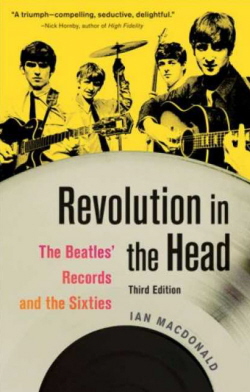 One noteworthy change concerned the arrangement of the bridge. Early run-throughs had the acoustic guitar being “fingerpicked in double-time” at the end of each lyrical phrase, according to Ian MacDonald’s book “Revolution In The Head.” Since this wasn’t found to be suitable, a suggestion was offered. “It was George Harrison’s idea to put the middle into waltz time,” Paul remembered, "like a German waltz. That came on the session, it was one of the cases of the arrangement being done on the session." In his book "The Lyrics," McCartney adds: "George Harrison suggested we try the waltz pattern, with suspended triplets, that ended up giving the song a profound sense of friction and fracture." One noteworthy change concerned the arrangement of the bridge. Early run-throughs had the acoustic guitar being “fingerpicked in double-time” at the end of each lyrical phrase, according to Ian MacDonald’s book “Revolution In The Head.” Since this wasn’t found to be suitable, a suggestion was offered. “It was George Harrison’s idea to put the middle into waltz time,” Paul remembered, "like a German waltz. That came on the session, it was one of the cases of the arrangement being done on the session." In his book "The Lyrics," McCartney adds: "George Harrison suggested we try the waltz pattern, with suspended triplets, that ended up giving the song a profound sense of friction and fracture."
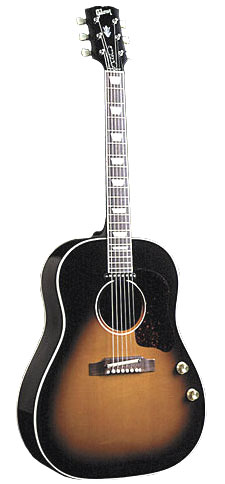 With that all worked out, two attempts of the rhythm track were recorded, the instruments being John on acoustic guitar, George on tambourine, Paul on bass and Ringo on drums. The first take began with Paul instructing John, “Do you remember the end?” to which he answers, “I know how it goes…it’s when it comes!” This take was nearly perfect except that it fizzled when Ringo forgot to switch to waltz time in the second bridge. The second take was all that was needed and they took a half-hour break before returning to start with the overdubs. With that all worked out, two attempts of the rhythm track were recorded, the instruments being John on acoustic guitar, George on tambourine, Paul on bass and Ringo on drums. The first take began with Paul instructing John, “Do you remember the end?” to which he answers, “I know how it goes…it’s when it comes!” This take was nearly perfect except that it fizzled when Ringo forgot to switch to waltz time in the second bridge. The second take was all that was needed and they took a half-hour break before returning to start with the overdubs.
 The second recording session for this day ran from 7 to 11:45 pm and was devoted entirely to overdubbing onto "take two" of the rhythm track. It was during this session that they found something interesting to be overdubbed to the song. “The other thing that arrived on the session was we found an old harmonium hidden away in the studio,” Paul recalls, “and said, ‘Oh, this’d be a nice color on it.’ We put the chords on with the harmonium as a wash, just a basic held chord, what you would call a pad these days.” The overdubs included two harmonium tracks, Paul’s lead vocals (which he also double-tracked) and John’s harmony vocals in the bridge. Thinking it was complete, the group left at 11:45 pm, presumably to get some needed rest. The second recording session for this day ran from 7 to 11:45 pm and was devoted entirely to overdubbing onto "take two" of the rhythm track. It was during this session that they found something interesting to be overdubbed to the song. “The other thing that arrived on the session was we found an old harmonium hidden away in the studio,” Paul recalls, “and said, ‘Oh, this’d be a nice color on it.’ We put the chords on with the harmonium as a wash, just a basic held chord, what you would call a pad these days.” The overdubs included two harmonium tracks, Paul’s lead vocals (which he also double-tracked) and John’s harmony vocals in the bridge. Thinking it was complete, the group left at 11:45 pm, presumably to get some needed rest.
 The first mono mix of the song was made on October 28th, 1965 in the EMI Studio Two control room by producer George Martin and engineers Norman Smith and Jerry Boys. This mix was not intended for release on record, however, but was made solely for The Beatles to lip-sync to during the filming of their British TV program “The Music Of Lennon And McCartney.” As it turned out, though, it wasn't utilized for this purpose either. When the group heard it, they felt that the vocals could be improved upon, which precluded the use of this mix. The first mono mix of the song was made on October 28th, 1965 in the EMI Studio Two control room by producer George Martin and engineers Norman Smith and Jerry Boys. This mix was not intended for release on record, however, but was made solely for The Beatles to lip-sync to during the filming of their British TV program “The Music Of Lennon And McCartney.” As it turned out, though, it wasn't utilized for this purpose either. When the group heard it, they felt that the vocals could be improved upon, which precluded the use of this mix.
 The next day, October 29th, 1965, The Beatles returned to EMI Studio Two for a two hour recording session (2 to 4 pm) to re-record the vocals for “We Can Work It Out.” With this complete, the total hours spent on the song tallied up to nearly eleven hours, the most time spent recording any Beatles song to date. (This was topped by “I’m Looking Through You” shortly afterward with a total of eighteen hours.) The next day, October 29th, 1965, The Beatles returned to EMI Studio Two for a two hour recording session (2 to 4 pm) to re-record the vocals for “We Can Work It Out.” With this complete, the total hours spent on the song tallied up to nearly eleven hours, the most time spent recording any Beatles song to date. (This was topped by “I’m Looking Through You” shortly afterward with a total of eighteen hours.)
 With this complete, two more mono mixes were made by George Martin, Norman Smith and 2nd engineer Ken Scott in the control room of EMI Studio Two. One of these mixes was made for the above mentioned television show and the other for release as a single. “Day Tripper” was also given two mono mixes on this day since it was also to be included in the TV program. With this complete, two more mono mixes were made by George Martin, Norman Smith and 2nd engineer Ken Scott in the control room of EMI Studio Two. One of these mixes was made for the above mentioned television show and the other for release as a single. “Day Tripper” was also given two mono mixes on this day since it was also to be included in the TV program.
 November 10th, 1965 was the date for the first stereo mixing of “We Can Work It Out,” which was done in Room 65 of EMI Studios by George Martin, Norman Smith and Jerry Boys. This mix was sent to the US to eventually be used on Capitol’s “Yesterday…And Today” album (and an Australian “Greatest Hits” album) and was reportedly scrapped on August 9th, 1966 because of being deemed inferior. This mix features the rhythm track primarily in the left channel except for some bleed-through into the right channel from the studio speaker during the vocal overdubs. The right channel contains all overdubs including the slightly reverbed vocals, one exception being one of the harmonium overdubs that appears centered in the mix. November 10th, 1965 was the date for the first stereo mixing of “We Can Work It Out,” which was done in Room 65 of EMI Studios by George Martin, Norman Smith and Jerry Boys. This mix was sent to the US to eventually be used on Capitol’s “Yesterday…And Today” album (and an Australian “Greatest Hits” album) and was reportedly scrapped on August 9th, 1966 because of being deemed inferior. This mix features the rhythm track primarily in the left channel except for some bleed-through into the right channel from the studio speaker during the vocal overdubs. The right channel contains all overdubs including the slightly reverbed vocals, one exception being one of the harmonium overdubs that appears centered in the mix.
 A second stereo mix was created on November 10th, 1966 (exactly one year later) also in Room 65 of EMI Studios by engineers Peter Bown and Graham Kirkby in preparation for the first British compilation album “A Collection Of Beatles Oldies.” This stereo mix is essentially the same as the first one except for more pronounced reverb on the vocals and both harmonium overdubs panned exclusively to the right channel. A second stereo mix was created on November 10th, 1966 (exactly one year later) also in Room 65 of EMI Studios by engineers Peter Bown and Graham Kirkby in preparation for the first British compilation album “A Collection Of Beatles Oldies.” This stereo mix is essentially the same as the first one except for more pronounced reverb on the vocals and both harmonium overdubs panned exclusively to the right channel.
 A further stereo mix was made in 2015 by Giles Martin (son of George Martin) and Sam Okell at Abbey Road Studios for inclusion in a re-release of the compilation album "Beatles 1." Then again in 2023, Giles Martin was given the task of creating a "demix remix" of "We Can Work It Out" for inclusion on the 50th Anniversary edition of the compilation album "The Beatles / 1962 - 1966" (aka "The Red Album"). With Peter Jackson's AI technology at his disposal, Giles Martin was able to utilize this "new machine-learning techology" so that "individual elements that were put to tape...and were therefore impossible to separate" could now be "untangled, allowing Giles (Martin) to put the original recordings back together with even greater clarity and impact," as stated by John Harris in the liner notes of the above mentioned album. John's harmonium performance is a bit quieter in this new mix, but otherwise, the "clarity and impact" witnessed here makes this arguably the best presentation of the song to date. A further stereo mix was made in 2015 by Giles Martin (son of George Martin) and Sam Okell at Abbey Road Studios for inclusion in a re-release of the compilation album "Beatles 1." Then again in 2023, Giles Martin was given the task of creating a "demix remix" of "We Can Work It Out" for inclusion on the 50th Anniversary edition of the compilation album "The Beatles / 1962 - 1966" (aka "The Red Album"). With Peter Jackson's AI technology at his disposal, Giles Martin was able to utilize this "new machine-learning techology" so that "individual elements that were put to tape...and were therefore impossible to separate" could now be "untangled, allowing Giles (Martin) to put the original recordings back together with even greater clarity and impact," as stated by John Harris in the liner notes of the above mentioned album. John's harmonium performance is a bit quieter in this new mix, but otherwise, the "clarity and impact" witnessed here makes this arguably the best presentation of the song to date.
 On January 25th, 1991, Paul McCartney and band performed the song during their MTV Unplugged show which was recorded and released on his “Unplugged (The Official Bootleg)” album. Also, sometime between March 22nd and June 15th, 1993, a live recording of the song was made that was released on his album “Paul Is Live.” Then, sometime between April 1st and May 18th, 2002, another live recording was released on his album “Back In The US.” On January 25th, 1991, Paul McCartney and band performed the song during their MTV Unplugged show which was recorded and released on his “Unplugged (The Official Bootleg)” album. Also, sometime between March 22nd and June 15th, 1993, a live recording of the song was made that was released on his album “Paul Is Live.” Then, sometime between April 1st and May 18th, 2002, another live recording was released on his album “Back In The US.”
Song Structure and Style
 Once again, The Beatles concoct a unique approach to the usual structure of their catalog up to this point. While the format itself is quite usual, comprising a ‘verse/ verse/ bridge/ verse/ bridge/ verse’ structure (or aababa) with a brief conclusion, the makeup of both the verse and the bridge brings elements that show the growth in their songwriting. Once again, The Beatles concoct a unique approach to the usual structure of their catalog up to this point. While the format itself is quite usual, comprising a ‘verse/ verse/ bridge/ verse/ bridge/ verse’ structure (or aababa) with a brief conclusion, the makeup of both the verse and the bridge brings elements that show the growth in their songwriting.
Let’s first examine the verse. The Beatles decide to abruptly jump directly into the first sixteen-measure verse without any need for an introduction, the full rhythm track (guitar, bass, drums and tambourine) coming in right on the downbeat of the first measure. Paul’s double-tracked lead vocals also appear immediately but actually come in a bit late (on the word "see"), while the overdubbed harmonium swells its volume for the first time on the first beat of the second measure.
 The verse is actually made up of three melodic phrases broken up in an uncommon manner compared to “Ticket To Ride,” for instance, which also has sixteen measures that are here broken up into four even melodic phrases of four measures each. In the case of “We Can Work It Out,” the first and second phrases are six measures long, the first being: “Try to see it my way, do I have to keep on talking till I can’t go on.” The second phrase is similar in length, which brings the verse through to the twelfth measure. Then, to round off the sixteen measures, a refrain-like four-measure conclusion of the verse occurs which repeats the title of the song twice, leaving the optimistic main phrase of the song indelibly etched in your mind. The verse is actually made up of three melodic phrases broken up in an uncommon manner compared to “Ticket To Ride,” for instance, which also has sixteen measures that are here broken up into four even melodic phrases of four measures each. In the case of “We Can Work It Out,” the first and second phrases are six measures long, the first being: “Try to see it my way, do I have to keep on talking till I can’t go on.” The second phrase is similar in length, which brings the verse through to the twelfth measure. Then, to round off the sixteen measures, a refrain-like four-measure conclusion of the verse occurs which repeats the title of the song twice, leaving the optimistic main phrase of the song indelibly etched in your mind.
 Arrangement-wise, these last four measures change the texture of the song to further emphasize this main phrase. The drums alter the pattern to double-time with snare beats on the one- and three- beats of each measure while the tambourine strategically accents the two- and four- beats of these same measures. The harmonium chords are also raised in volume at this point while Paul’s vocals jump into a higher range than heard so far in the song, both doing their part to further make the end of the verse stand out. Arrangement-wise, these last four measures change the texture of the song to further emphasize this main phrase. The drums alter the pattern to double-time with snare beats on the one- and three- beats of each measure while the tambourine strategically accents the two- and four- beats of these same measures. The harmonium chords are also raised in volume at this point while Paul’s vocals jump into a higher range than heard so far in the song, both doing their part to further make the end of the verse stand out.
 The second sixteen-measure verse is arranged invariably the same but with a couple of noticeable quirks. While the tambourine in the first verse only accented the third beat in every even-numbered measure (for the first twelve measures, that is), George accidentally hits the accent on the second beat of the second measure instead of the third (during the word “saying”). Also, Lennon makes a rhythm guitar flub on the downbeat of the sixth measure while switching from C to D (during the word “alright”). This seemed to be a little tough for him since he made the same flub in the unused first take of the rhythm track as well. The second sixteen-measure verse is arranged invariably the same but with a couple of noticeable quirks. While the tambourine in the first verse only accented the third beat in every even-numbered measure (for the first twelve measures, that is), George accidentally hits the accent on the second beat of the second measure instead of the third (during the word “saying”). Also, Lennon makes a rhythm guitar flub on the downbeat of the sixth measure while switching from C to D (during the word “alright”). This seemed to be a little tough for him since he made the same flub in the unused first take of the rhythm track as well.
 The bridge, which comes next, is quite tricky. It is twenty-four measures long and can be divided into two identical twelve-measure sections with the last four measures of each section being played in 3/4 waltz time instead of 4/4 time like the rest of the song. This could very well have been inspired by the similar inclusion in Buddy Holly’s “That’ll Be The Day,” knowing that the group had a fondness for Buddy and that song in particular. Interestingly, the 3/4 sections keep the time perfectly, meaning you can keep counting in 4/4 time through these measures and still end up with a symmetrical twenty-four measures. It may appear to speed up when the waltz section ends, but this is only an illusion. The bridge, which comes next, is quite tricky. It is twenty-four measures long and can be divided into two identical twelve-measure sections with the last four measures of each section being played in 3/4 waltz time instead of 4/4 time like the rest of the song. This could very well have been inspired by the similar inclusion in Buddy Holly’s “That’ll Be The Day,” knowing that the group had a fondness for Buddy and that song in particular. Interestingly, the 3/4 sections keep the time perfectly, meaning you can keep counting in 4/4 time through these measures and still end up with a symmetrical twenty-four measures. It may appear to speed up when the waltz section ends, but this is only an illusion.
 The arrangement changes drastically as well, with lower harmony vocals from John appearing for the first time. Actually, since John is credited as the major songwriter of the bridge, one could easily say that he is singing the lower lead while Paul is singing a higher harmony. Be that as it may, two-part harmony comprises the entire bridge, as do some interesting held notes from the harmonium, which were the result of a second overdub from the instrument and appear centered in the first stereo mix of the song. Descending notes from the bass guitar and harmonium contrast nicely with the held B minor chords of the acoustic guitar in the waltz-time measures. The arrangement changes drastically as well, with lower harmony vocals from John appearing for the first time. Actually, since John is credited as the major songwriter of the bridge, one could easily say that he is singing the lower lead while Paul is singing a higher harmony. Be that as it may, two-part harmony comprises the entire bridge, as do some interesting held notes from the harmonium, which were the result of a second overdub from the instrument and appear centered in the first stereo mix of the song. Descending notes from the bass guitar and harmonium contrast nicely with the held B minor chords of the acoustic guitar in the waltz-time measures.
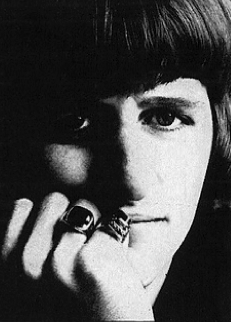 The drums in the bridge continue the snare accents on the one- and three- beats of each measure at first, as in the final measures of the previous verse. However, when the waltz-like measures occur in the bridge, the percussion changes to cymbal crashes on the downbeats and tambourine accents on the two- and three-beats of each of these measures. The waltz tempo of these sections are actually anticipated by the vocal melody line in measure eight (“fuss / ing / and”). The drums in the bridge continue the snare accents on the one- and three- beats of each measure at first, as in the final measures of the previous verse. However, when the waltz-like measures occur in the bridge, the percussion changes to cymbal crashes on the downbeats and tambourine accents on the two- and three-beats of each of these measures. The waltz tempo of these sections are actually anticipated by the vocal melody line in measure eight (“fuss / ing / and”).
 A third sixteen-measure verse is then heard which follows the usual verse pattern and arrangement, one interesting feature being the acoustic guitar accentuation (“cha-ching-ching”) in the sixth measure after the phrase “right or I am wrong.” George's tambourine accent is once again miss-hit in the eighth measure, coming in on the fourth beat instead of the third (after the words “your way”). A third sixteen-measure verse is then heard which follows the usual verse pattern and arrangement, one interesting feature being the acoustic guitar accentuation (“cha-ching-ching”) in the sixth measure after the phrase “right or I am wrong.” George's tambourine accent is once again miss-hit in the eighth measure, coming in on the fourth beat instead of the third (after the words “your way”).
 A nearly indistinguishable repeat of the bridge comes next, an observable difference being the harmonium playing an F# chord just before the words “I have always thought.” In all of the other similar places in the bridge, John continues to play the B minor chord, so this change is an interesting variance to add a distinct color to the song. A nearly indistinguishable repeat of the bridge comes next, an observable difference being the harmonium playing an F# chord just before the words “I have always thought.” In all of the other similar places in the bridge, John continues to play the B minor chord, so this change is an interesting variance to add a distinct color to the song.
 After this comes a nearly identical repeat of the third verse with Paul this time raising his melody line in the twelfth measure (“before too lo-o-ong”) to match what he vocalized in the second verse (“say goodni-i-ight”). A three-measure conclusion then finishes off the song which reprises the striking waltz tempo of the bridge. This time, however, instead of capitalizing on the negative mood of the lyrics (“fussing and fighting”) with a minor chord, it plays on the optimistic tone of the words with a D major, this being the home key of the song and a proper resolve. As an interesting counterpoint, the rhythm guitar chord holds the D major chord while the harmonium plays a chorded phrase that injects a G major chord. The final harmonium chord rings out in full volume as the final word as it is faded down in the mix. After this comes a nearly identical repeat of the third verse with Paul this time raising his melody line in the twelfth measure (“before too lo-o-ong”) to match what he vocalized in the second verse (“say goodni-i-ight”). A three-measure conclusion then finishes off the song which reprises the striking waltz tempo of the bridge. This time, however, instead of capitalizing on the negative mood of the lyrics (“fussing and fighting”) with a minor chord, it plays on the optimistic tone of the words with a D major, this being the home key of the song and a proper resolve. As an interesting counterpoint, the rhythm guitar chord holds the D major chord while the harmonium plays a chorded phrase that injects a G major chord. The final harmonium chord rings out in full volume as the final word as it is faded down in the mix.
 Although Paul is instrumentally relegated only to bass guitar, his presence is felt as he takes the reins for what was, for all intents and purposes, his personal composition concerning his current romantic problems. McCartney's pitch perfect double-tracking is performed with his usual impeccability while his bass work adds the necessary harmonic touches to work well in exemplifying the arrangement. Although Paul is instrumentally relegated only to bass guitar, his presence is felt as he takes the reins for what was, for all intents and purposes, his personal composition concerning his current romantic problems. McCartney's pitch perfect double-tracking is performed with his usual impeccability while his bass work adds the necessary harmonic touches to work well in exemplifying the arrangement.
Lennon’s harmonium playing is impressive with its volume pedal swells in the verses simulating what sounds like (to me, anyway) an accordion while his voluminous chording makes its presence known in the arrangement when it’s called for. John's acoustic rhythm guitar playing was also performed with precision, much emphasis being put on sustaining the D chord to accentuate Paul’s vocal line, something that Paul didn’t do on his acoustic guitar demo for the song. Add to this his incredible vocal work in the bridges and we can see how John obviously thought a lot about getting the song down perfectly. In fact, when both John and Paul were asked in 1966 if this song and “Day Tripper” were “forced,” they both emphatically replied “No!”
 Much strategic planning must have been necessary for George's tambourine work which, according to Chris Ingham’s book “The Rough Guide To The Beatles,” was “the most elaborate element of the record.” Ringo, as usual, put in a gallant effort with the arrangement and, with some ‘working out’ to be done with the waltz tempo in the bridge, he got the job done. Much strategic planning must have been necessary for George's tambourine work which, according to Chris Ingham’s book “The Rough Guide To The Beatles,” was “the most elaborate element of the record.” Ringo, as usual, put in a gallant effort with the arrangement and, with some ‘working out’ to be done with the waltz tempo in the bridge, he got the job done.
 Lyrically, Paul’s optimistic and hopeful lyrics show that he wants things to ‘work out’ between him and Jane Asher, although desperation does rear its ugly head in his words. “Do I have to keep on talking till I can’t go on?” he exasperatingly asks. As with most troubled relationships, he argues that his points are the right ones and hers the wrong ones. “Try to see it my way,” Paul keeps insisting, while seeing it “your way” always results in the worst, such as “our love may soon be gone” and “we might fall apart before too long.” The results of ‘his way’ would be to “work it out and get it straight or say goodnight.” The solution is very clear…at least in his eyes. Lyrically, Paul’s optimistic and hopeful lyrics show that he wants things to ‘work out’ between him and Jane Asher, although desperation does rear its ugly head in his words. “Do I have to keep on talking till I can’t go on?” he exasperatingly asks. As with most troubled relationships, he argues that his points are the right ones and hers the wrong ones. “Try to see it my way,” Paul keeps insisting, while seeing it “your way” always results in the worst, such as “our love may soon be gone” and “we might fall apart before too long.” The results of ‘his way’ would be to “work it out and get it straight or say goodnight.” The solution is very clear…at least in his eyes.
 Lennon’s bridge, although simulating being sung by the same person who sings the verses, shows the one pleading his case as throwing up his hands and complaining that “life is very short and there’s no time for fussing and fighting,” referring to this futile exchange as a “crime” of wasting better used time. While referring to the woman with the amicable term “my friend,” he continues his plea “so I will ask you once again” to usher in the return of the frustrating issue at hand. Lennon’s bridge, although simulating being sung by the same person who sings the verses, shows the one pleading his case as throwing up his hands and complaining that “life is very short and there’s no time for fussing and fighting,” referring to this futile exchange as a “crime” of wasting better used time. While referring to the woman with the amicable term “my friend,” he continues his plea “so I will ask you once again” to usher in the return of the frustrating issue at hand.
On July 20th, 1968, Jane Asher announced on the BBC show Dee Time, “My engagement to Paul is off!” Apparently Paul’s assurance that they could “work it out” turned out to be wrong.
 US picture sleeve
|
American Releases
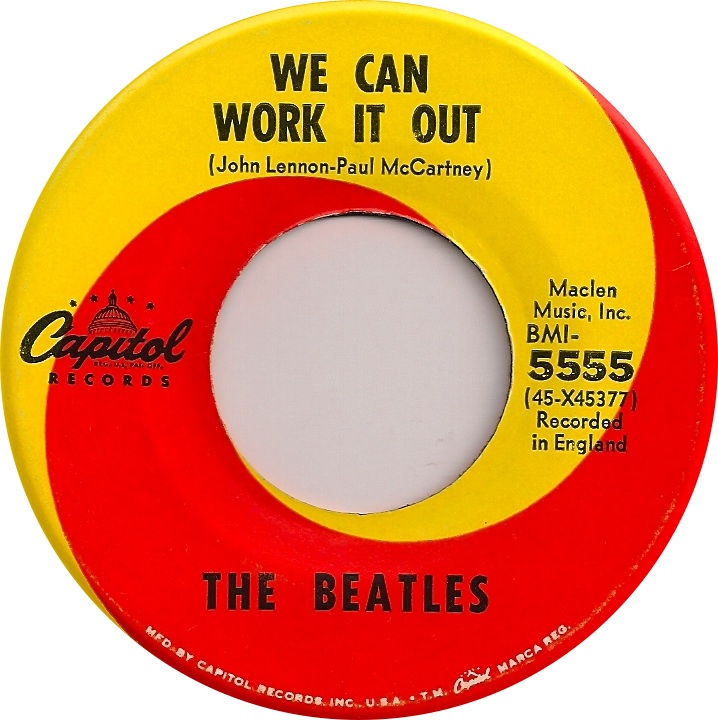 On December 6th, 1965, this being three days after the single was released in Britain, Capitol Records followed suit and released “We Can Work It Out” and “Day Tripper” as a double a-side single. As far as cataloging is concerned, one of the songs needed to be designated as the more primary track. Therefore “We Can Work It Out” received the lower index number (45-X45377), indicating that this song would be viewed as the a-side of the single, the next sequential number (45-X45378) going to “Day Tripper,” designating it as the b-side. This is why, when the record was reprinted in the '70s on the Apple label, “We Can Work It Out” was printed on the “full Apple” side while “Day Tripper” appeared on the “sliced Apple” label. On December 6th, 1965, this being three days after the single was released in Britain, Capitol Records followed suit and released “We Can Work It Out” and “Day Tripper” as a double a-side single. As far as cataloging is concerned, one of the songs needed to be designated as the more primary track. Therefore “We Can Work It Out” received the lower index number (45-X45377), indicating that this song would be viewed as the a-side of the single, the next sequential number (45-X45378) going to “Day Tripper,” designating it as the b-side. This is why, when the record was reprinted in the '70s on the Apple label, “We Can Work It Out” was printed on the “full Apple” side while “Day Tripper” appeared on the “sliced Apple” label.
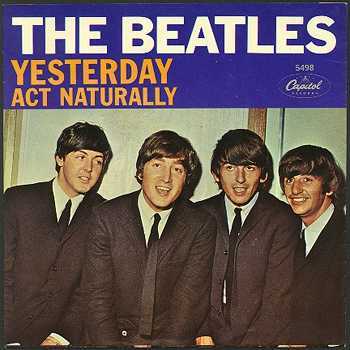 “We Can Work It Out” quickly shot up the Billboard Hot 100 as a rapid-fire follow-up to their #1 hit “Yesterday” and secured the top spot for itself on January 1st, 1966. It stayed at #1 for two weeks, dislodging Simon And Garfunkel’s “The Sound Of Silence” from that position. Then, “Silence” edged its way back to the top for another week as “We Can Work It Out” returned the following week, totaling three weeks as the most popular song in the US. “We Can Work It Out” quickly shot up the Billboard Hot 100 as a rapid-fire follow-up to their #1 hit “Yesterday” and secured the top spot for itself on January 1st, 1966. It stayed at #1 for two weeks, dislodging Simon And Garfunkel’s “The Sound Of Silence” from that position. Then, “Silence” edged its way back to the top for another week as “We Can Work It Out” returned the following week, totaling three weeks as the most popular song in the US.
 June 20th, 1966 was the date the song appeared on an American album, Capitol’s “Yesterday…And Today” positioning it as the third song on side two. This album featured the unique stereo mix of the song with the centered harmonium overdub, while Britain had to wait a few more months to hear the song in stereo on the album “A Collection Of Beatles Oldies,” which was released there on December 9th, 1966. This British album, however, contains the more common stereo mix (with both harmonium tracks panned to the right channel) as heard on compact disc today. The album "Yesterday...And Today" was then released on January 21st, 2014, as an individual compact disc, both the mono and stereo versions of the album being included on a single disc. Incidentally, this release featured both the "trunk" cover and the "butcher" cover. June 20th, 1966 was the date the song appeared on an American album, Capitol’s “Yesterday…And Today” positioning it as the third song on side two. This album featured the unique stereo mix of the song with the centered harmonium overdub, while Britain had to wait a few more months to hear the song in stereo on the album “A Collection Of Beatles Oldies,” which was released there on December 9th, 1966. This British album, however, contains the more common stereo mix (with both harmonium tracks panned to the right channel) as heard on compact disc today. The album "Yesterday...And Today" was then released on January 21st, 2014, as an individual compact disc, both the mono and stereo versions of the album being included on a single disc. Incidentally, this release featured both the "trunk" cover and the "butcher" cover.
 Sometime in 1967, Capitol released Beatles music on a new but relatively short-lived format called "Playtapes." These tape cartridges did not have the capability to include entire albums, so two truncated four-song versions of "Yesterday...And Today" were released in this portable format, "We Can Work It Out" being on one of them. These "Playtapes" are highly collectable today. Sometime in 1967, Capitol released Beatles music on a new but relatively short-lived format called "Playtapes." These tape cartridges did not have the capability to include entire albums, so two truncated four-song versions of "Yesterday...And Today" were released in this portable format, "We Can Work It Out" being on one of them. These "Playtapes" are highly collectable today.
 Sometime in 1969, Capitol’s Jacksonville, Illinois factory accidentally pressed the original 1965 single on the Starline label, characteristic for its red and while circle design. Being that this was a very short run, this variation of the record is known by some as one of, if not the most, valuable of all the Capitol Beatles 45’s. Sometime in 1969, Capitol’s Jacksonville, Illinois factory accidentally pressed the original 1965 single on the Starline label, characteristic for its red and while circle design. Being that this was a very short run, this variation of the record is known by some as one of, if not the most, valuable of all the Capitol Beatles 45’s.
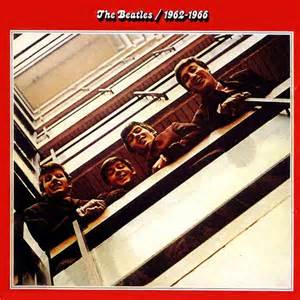 On April 2nd, 1973, the US got its first official Beatles compilation package, the double-album “The Beatles/ 1962-1966” (aka “The Red Album”). The unique stereo mix of “We Can Work It Out” appeared on the vinyl set as released in 1973, while the common British stereo mix replaced it when it was released on compact disc in 1993 and also when it was remastered and re-released on October 18th, 2010. On April 2nd, 1973, the US got its first official Beatles compilation package, the double-album “The Beatles/ 1962-1966” (aka “The Red Album”). The unique stereo mix of “We Can Work It Out” appeared on the vinyl set as released in 1973, while the common British stereo mix replaced it when it was released on compact disc in 1993 and also when it was remastered and re-released on October 18th, 2010.
 Next, a single compilation album was released on October 11th, 1982 entitled “20 Greatest Hits.” While the American version differed substantially from the British because of the difference in which songs reached the #1 position in its respective country, “We Can Work It Out” appeared on both, the US version still featuring the unique stereo mix. Next, a single compilation album was released on October 11th, 1982 entitled “20 Greatest Hits.” While the American version differed substantially from the British because of the difference in which songs reached the #1 position in its respective country, “We Can Work It Out” appeared on both, the US version still featuring the unique stereo mix.
 The CD era brought a couple further Beatles compilation albums, “Past Masters Volume Two” featuring the song as the second track. The common stereo mix was included on this release, which came out on March 7th, 1988. Both volumes of "Past Masters" were combined into a double-album for the vinyl edition, this being released on October 24th, 1988. The double-album concept of these compilation albums continued when it was remastered and re-released on CD on September 9th, 2009 and on vinyl on November 12th, 2012. The CD era brought a couple further Beatles compilation albums, “Past Masters Volume Two” featuring the song as the second track. The common stereo mix was included on this release, which came out on March 7th, 1988. Both volumes of "Past Masters" were combined into a double-album for the vinyl edition, this being released on October 24th, 1988. The double-album concept of these compilation albums continued when it was remastered and re-released on CD on September 9th, 2009 and on vinyl on November 12th, 2012.
The original single was re-released one further time in the states on the Capitol Cema “For Jukeboxes Only” series on January 24th, 1996. This unique single, printed on pink vinyl, is quite the find today.
 By the year 2000, it was due time for another Beatles compilation album, and this one was a doozie! “Beatles 1” was a single CD that was released on November 13th, 2000 and included all of The Beatles songs that reached the top spot in either Britain or America, “We Can Work It Out” fitting this bill in both cases. With sales over 11,700,000 copies in the US, it became the biggest selling album in this country from 2000 to 2009. A remastered version of this album was released in September of 2011 and a newly mixed version was released on November 6th, 2015. By the year 2000, it was due time for another Beatles compilation album, and this one was a doozie! “Beatles 1” was a single CD that was released on November 13th, 2000 and included all of The Beatles songs that reached the top spot in either Britain or America, “We Can Work It Out” fitting this bill in both cases. With sales over 11,700,000 copies in the US, it became the biggest selling album in this country from 2000 to 2009. A remastered version of this album was released in September of 2011 and a newly mixed version was released on November 6th, 2015.
September 9th, 2009 was the release date of the CD box set “The Beatles In Mono,” which features the remastered Beatles catalog from the original mono mixes. “We Can Work It Out” is featured on the bonus disc "Mono Masters." The vinyl edition of this box set was first released on September 9th, 2014.
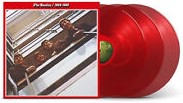 A new 50th Anniversay edition of the compilation album "The Beatles / 1962 - 1966" (aka "The Red Album") was released on November 10th, 2023, the newer stereo mix of "We Can Work It Out" detailed above being included here. This expanded release included 12 additional songs for a total of 38 tracks, and was made available as a double CD and as a triple vinyl release on both black and red vinyl. A new 50th Anniversay edition of the compilation album "The Beatles / 1962 - 1966" (aka "The Red Album") was released on November 10th, 2023, the newer stereo mix of "We Can Work It Out" detailed above being included here. This expanded release included 12 additional songs for a total of 38 tracks, and was made available as a double CD and as a triple vinyl release on both black and red vinyl.
 Three American-released Paul McCartney live albums also included the song, the first being “Unplugged (The Official Bootleg)” which was released on May 20th, 1991. Then came “Paul Is Live,” released on November 15th, 1993. Finally, “Back In The US,” which was released on November 11th, 2002. Three American-released Paul McCartney live albums also included the song, the first being “Unplugged (The Official Bootleg)” which was released on May 20th, 1991. Then came “Paul Is Live,” released on November 15th, 1993. Finally, “Back In The US,” which was released on November 11th, 2002.
Live Performances
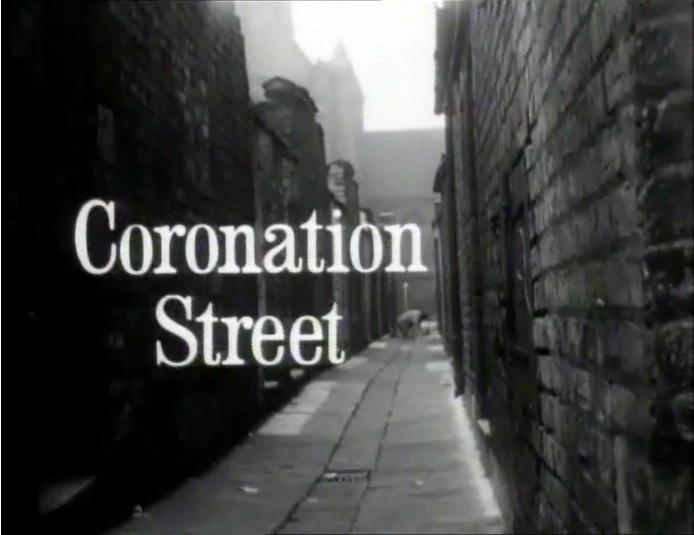 On November 1st and 2nd of 1965, The Beatles assembled in Granada TV Centre in Manchester to film a British television special called “The Music Of Lennon And McCartney.” The group filmed two mimed sequences to promote their upcoming new single, “We Can Work It Out” being one of them. With John sitting at the studio harmonium used on the popular British TV show “Coronation Street” and George with an electric guitar (although an acoustic is clearly heard on the recording), the group ran through the song and nodded to a make-believe studio audience at the conclusion in thanks for their applause, which was added later. On November 1st and 2nd of 1965, The Beatles assembled in Granada TV Centre in Manchester to film a British television special called “The Music Of Lennon And McCartney.” The group filmed two mimed sequences to promote their upcoming new single, “We Can Work It Out” being one of them. With John sitting at the studio harmonium used on the popular British TV show “Coronation Street” and George with an electric guitar (although an acoustic is clearly heard on the recording), the group ran through the song and nodded to a make-believe studio audience at the conclusion in thanks for their applause, which was added later.
 When the show was first broadcast in London on December 16th of that year (and December 17th for the rest of Britain), it was preceded by a hilarious Shakespearean-style reading of their hit song “A Hard Day’s Night” by Peter Sellers, afterwards introducing The Beatles with the words: “And I do all this, yet cannot get a hit?” When the show was first broadcast in London on December 16th of that year (and December 17th for the rest of Britain), it was preceded by a hilarious Shakespearean-style reading of their hit song “A Hard Day’s Night” by Peter Sellers, afterwards introducing The Beatles with the words: “And I do all this, yet cannot get a hit?”
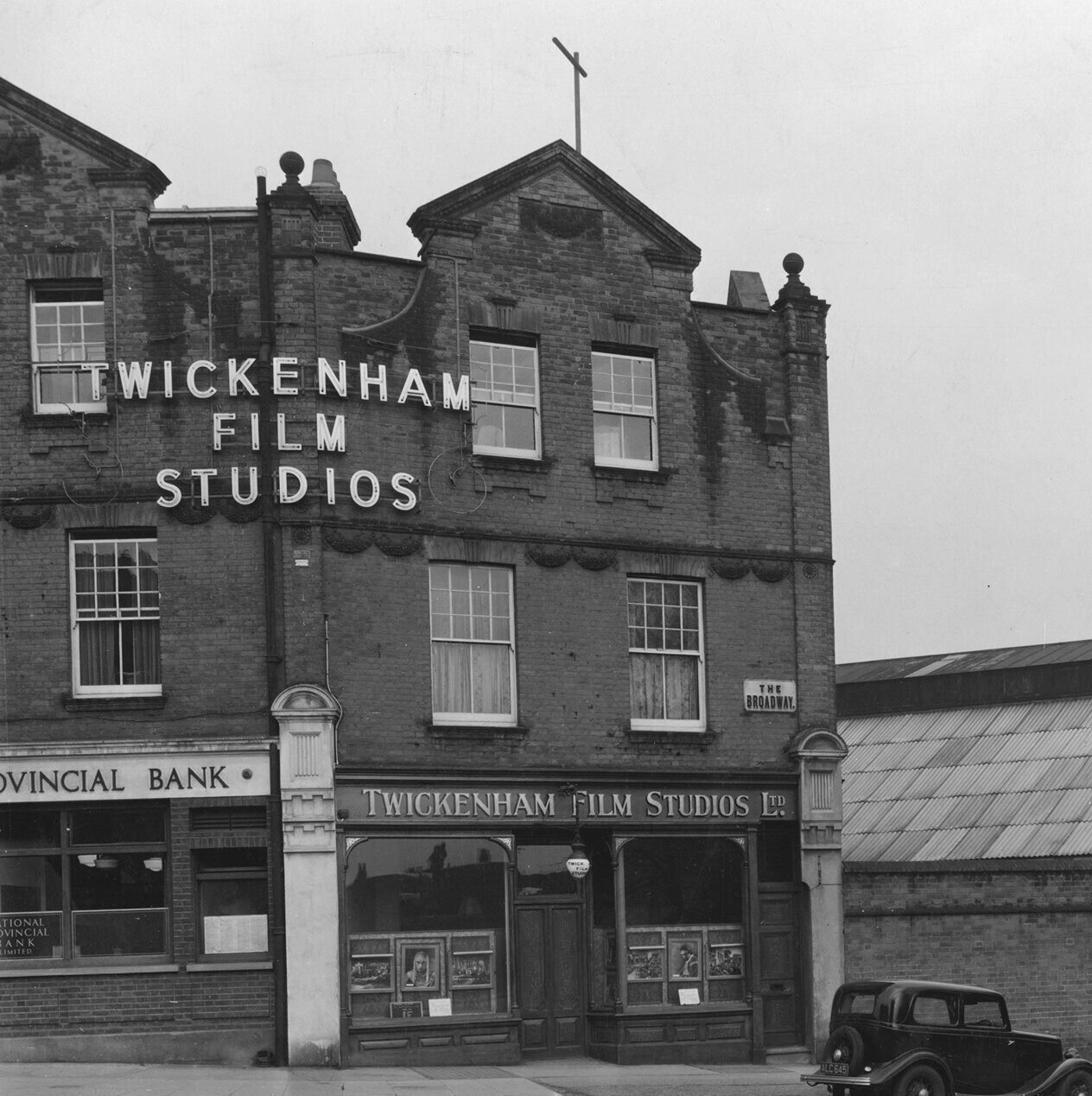 Striking upon this relatively new idea of filming a mimed performance for television, the group entered Twickenham Film Studios to spend the day taping videos to be distributed around the world so that there would be no need for them to make personal television appearances. Five songs were filmed, “We Can Work It Out” being done three times in order to promote their most recent hit single repeatedly with different footage. Striking upon this relatively new idea of filming a mimed performance for television, the group entered Twickenham Film Studios to spend the day taping videos to be distributed around the world so that there would be no need for them to make personal television appearances. Five songs were filmed, “We Can Work It Out” being done three times in order to promote their most recent hit single repeatedly with different footage.
 All three versions of the song have John playing an organ and George playing an electric guitar. The first two versions show the group wearing black turtlenecks and positioned before the same silvery stage set as the camera angles, switches and pans are identical. Both of these first two performances show George deciding to sit down on the drum riser during the second bridge of the song. Both John and Paul show signs of smiling and laughing during the filming as the ending harmonium riff is faked ridiculously by John on the organ. All three versions of the song have John playing an organ and George playing an electric guitar. The first two versions show the group wearing black turtlenecks and positioned before the same silvery stage set as the camera angles, switches and pans are identical. Both of these first two performances show George deciding to sit down on the drum riser during the second bridge of the song. Both John and Paul show signs of smiling and laughing during the filming as the ending harmonium riff is faked ridiculously by John on the organ.
 The third version is quite different, with The Beatles wearing their Shea Stadium uniforms and situated before a different set, with John sitting in front of a huge blow-up of an old picture of men lined up with beer steins. In fact, the video starts with a still shot of John with a sunflower in his eye. Propped on John’s organ is a picture of a face of an old man which we can see clearly during the second bridge. George this time decides to just sit on the drum riser throughout the whole song as both Paul and John can hardly keep themselves from outright laughing. The final shot of John playing the concluding harmonium riff even ends with him lifting his leg onto the keyboard and stretching out his arms which sends Paul over the edge in laughter. Quite a humorous clip! The third version is quite different, with The Beatles wearing their Shea Stadium uniforms and situated before a different set, with John sitting in front of a huge blow-up of an old picture of men lined up with beer steins. In fact, the video starts with a still shot of John with a sunflower in his eye. Propped on John’s organ is a picture of a face of an old man which we can see clearly during the second bridge. George this time decides to just sit on the drum riser throughout the whole song as both Paul and John can hardly keep themselves from outright laughing. The final shot of John playing the concluding harmonium riff even ends with him lifting his leg onto the keyboard and stretching out his arms which sends Paul over the edge in laughter. Quite a humorous clip!
 Their final British tour, which ran from December 3rd to 12th, 1965, was the only tour during which the group actually performed the song live on stage. This tour moved through Newcastle-upon-Tyne, Glasgow, Manchester, London, Birmingham, Yorkshire, Cardiff and even their hometown of Liverpool at The Empire Theatre on December 5th, 1965, their last live appearance there. Their final British tour, which ran from December 3rd to 12th, 1965, was the only tour during which the group actually performed the song live on stage. This tour moved through Newcastle-upon-Tyne, Glasgow, Manchester, London, Birmingham, Yorkshire, Cardiff and even their hometown of Liverpool at The Empire Theatre on December 5th, 1965, their last live appearance there.
 A worldwide #1 Beatles hit with McCartney singing lead was a sure thing to be included in his solo live performances. January 25th, 1991 was his premier of "We Can Work It Out" live before a studio audience on MTV’s television show “Unplugged.” It was so new to his repertoire that he kept forgetting the lyrics, Paul first stopping the song after the sixth measure and proclaiming “This is so informal, we’ll start again.” After a second try, he stops it in the middle of the second verse saying “Oh, I can’t do this, sorry guys…I knew’em. I did before I came in here.” After refreshing his memory, he finally made it through the song. (The second mistake was omitted from his album “Unplugged (The Official Bootleg)”.) Paul became confident enough to include the song in his “Unplugged 1991 Summer Tour,” which ran from May 8th to July 24th of that year. A worldwide #1 Beatles hit with McCartney singing lead was a sure thing to be included in his solo live performances. January 25th, 1991 was his premier of "We Can Work It Out" live before a studio audience on MTV’s television show “Unplugged.” It was so new to his repertoire that he kept forgetting the lyrics, Paul first stopping the song after the sixth measure and proclaiming “This is so informal, we’ll start again.” After a second try, he stops it in the middle of the second verse saying “Oh, I can’t do this, sorry guys…I knew’em. I did before I came in here.” After refreshing his memory, he finally made it through the song. (The second mistake was omitted from his album “Unplugged (The Official Bootleg)”.) Paul became confident enough to include the song in his “Unplugged 1991 Summer Tour,” which ran from May 8th to July 24th of that year.
His “New World Tour” also included the song in its set list, this tour stretching from February 18th to December 16th, 1993 and hitting Europe, Australia, New Zealand, North America, Japan and Latin America.
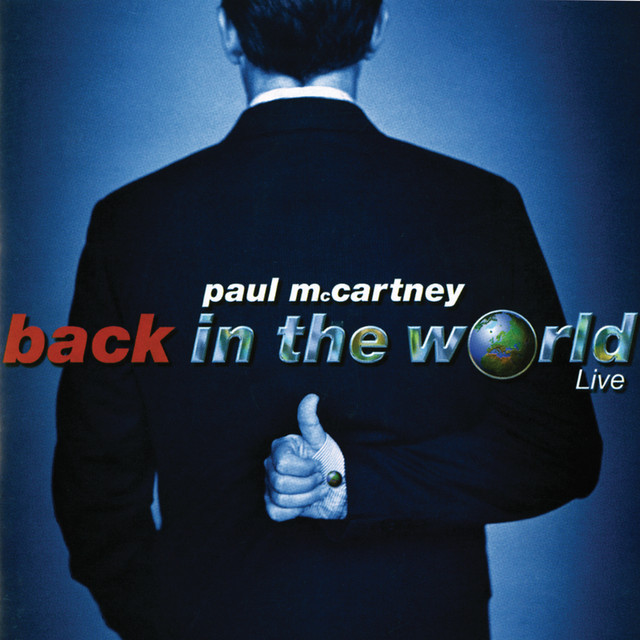 McCartney’s “Driving USA” tour also included “We Can Work It Out,” with dates from April 1st to May 18th, 2002. Paul continued touring the country that year on his “Back In The US” tour with dates from September 21st to October 29th, 2002. Also, his brief November “Driving Mexico” and “Driving Japan” tours of 2002 included the song as well. He then continued touring in 2003, his “Back In The World” tour, which featured the song, stretching from March 25th to June 1st, touching down in Paris, Stockholm, London, and even Hamburg and Liverpool amongst others. McCartney’s “Driving USA” tour also included “We Can Work It Out,” with dates from April 1st to May 18th, 2002. Paul continued touring the country that year on his “Back In The US” tour with dates from September 21st to October 29th, 2002. Also, his brief November “Driving Mexico” and “Driving Japan” tours of 2002 included the song as well. He then continued touring in 2003, his “Back In The World” tour, which featured the song, stretching from March 25th to June 1st, touching down in Paris, Stockholm, London, and even Hamburg and Liverpool amongst others.
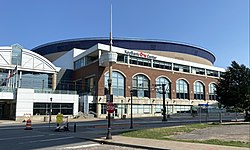 Paul's “’04 Summer Tour” also included the song in its set list, this tour going from May 25th to June 26th of that year, playing in Spain, France, Switzerland and even Russia. Then, Paul's "Out There!" tour, which ran from May 4th, 2013 in Brazil to October 22nd, 2015 at the First Niagara Center in Buffalo, New York, included the song as well. His "One On One" tour also featured the song, this tour running from April 13th, 2013 in Fresno, California to December 16th, 2017 in Auckland, New Zealand. He periodically performed the song during his "Freshen Up" tour, which began on September 17th, 2018 in Quebec City, Canada and ended on July 13th, 2019 in Los Angeles, California. He sometimes included the song during the 2022 leg of his "Got Back" tour as well, which ran from April 28th in Spokane, Washington to June 25th in Pilton, England. Paul's “’04 Summer Tour” also included the song in its set list, this tour going from May 25th to June 26th of that year, playing in Spain, France, Switzerland and even Russia. Then, Paul's "Out There!" tour, which ran from May 4th, 2013 in Brazil to October 22nd, 2015 at the First Niagara Center in Buffalo, New York, included the song as well. His "One On One" tour also featured the song, this tour running from April 13th, 2013 in Fresno, California to December 16th, 2017 in Auckland, New Zealand. He periodically performed the song during his "Freshen Up" tour, which began on September 17th, 2018 in Quebec City, Canada and ended on July 13th, 2019 in Los Angeles, California. He sometimes included the song during the 2022 leg of his "Got Back" tour as well, which ran from April 28th in Spokane, Washington to June 25th in Pilton, England.
Conclusion
 Those who are studied in the collaborative efforts of John Lennon and Paul McCartney are familiar with the fact that their teamwork usually consisted of one playing the role of helper to the other's initial inspiration. While there were occasions of full collaboration from the ground up, such as “She Loves You” and “I Want To Hold Your Hand,” these examples were early efforts of their career that they grew to have a distaste for and then abandoned, eventually preferring to compose alone. Those who are studied in the collaborative efforts of John Lennon and Paul McCartney are familiar with the fact that their teamwork usually consisted of one playing the role of helper to the other's initial inspiration. While there were occasions of full collaboration from the ground up, such as “She Loves You” and “I Want To Hold Your Hand,” these examples were early efforts of their career that they grew to have a distaste for and then abandoned, eventually preferring to compose alone.
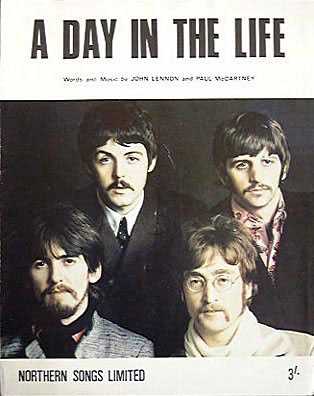 However, there are a good number of instances where they met up to finish off a previously conceived idea. “We Can Work It Out” is just such an example. Lennon’s “life is very short…” bridge, while contrasting in style, was the perfect complement to McCartney’s original concept. His similar contributions to the likes of “Getting Better” and “She’s Leaving Home,” for example, show the genius of their joint efforts, as do Paul’s input on John’s initial visions, “Lucy In The Sky With Diamonds” and “Norwegian Wood” being prime examples. They were even clever enough to merge unfinished individual songs to create indisputable masterpieces, such as “A Day In The Life.” However, there are a good number of instances where they met up to finish off a previously conceived idea. “We Can Work It Out” is just such an example. Lennon’s “life is very short…” bridge, while contrasting in style, was the perfect complement to McCartney’s original concept. His similar contributions to the likes of “Getting Better” and “She’s Leaving Home,” for example, show the genius of their joint efforts, as do Paul’s input on John’s initial visions, “Lucy In The Sky With Diamonds” and “Norwegian Wood” being prime examples. They were even clever enough to merge unfinished individual songs to create indisputable masterpieces, such as “A Day In The Life.”
I guess that genius is both the reason why I’m writing this and the reason you are reading it.
Song Summary
“We Can Work It Out”
Written by: John Lennon / Paul McCartney
-
Song Written: October, 1965
-
Song Recorded: October 20 & 29, 1965
-
First US Release Date: December 6, 1965
-
US Single Release: Capitol #5555
-
Highest Chart Position: #1 (three weeks)
-
-
British Album Release: Parlophone #PCS 7016 “A Collection Of Beatles Oldies”
-
Length: 2:10
-
Key: D major
-
Producer: George Martin
-
Engineers: Norman Smith, Ken Scott
Instrumentation (most likely):
-
Paul McCartney - Lead and Harmony Vocals, Bass Guitar (1964 Rickenbacker 4001S)
-
John Lennon - Rhythm Guitar (1964 Gibson J-160E), Harmonium (Mannborg), Harmony Vocals
-
Ringo Starr – Drums (1965 Ludwig Super Classic Black Oyster Pearl)
-
George Harrison – tambourine
Written and compiled by Dave Rybaczewski
|
IF YOU WOULD LIKE TO MAKE A DONATION TO KEEP THIS WEBSITE UP AND RUNNING, PLEASE CLICK BELOW!
Sign Up Below for our MONTHLY BEATLES TRIVIA QUIZ!
|